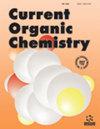锆催化的对映选择性转化
IF 2.1
3区 化学
Q3 CHEMISTRY, ORGANIC
引用次数: 0
摘要
:与用于催化的普通金属相比,第 4 族金属成本更低、毒性更小,因此越来越多地应用于催化领域,开发出许多新型绿色转化技术。在这些金属中,锆资源丰富、无毒,而且具有显著的多样化化学反应活性。自 1992 年 Nugent 首次披露不对称锆催化反应以来,各种手性锆催化剂已被证明能够促进多种类型的高对映选择性转化,包括标准反应(如弗里德尔-卡夫斯反应)、环加成反应、醛缩合反应、烷基化反应、烷基化反应等、环加成反应、醛醇反应、曼尼希反应、环氧化反应、羰基化合物和衍生物的亲核加成反应、氰化反应、开环反应、羟化反应、氢甲酰化反应、碳铝化反应等标准反应,以及更现代、更复杂的多米诺和串联过程。本综述旨在收集手性锆催化剂促进的各类对映选择性转化领域取得的主要进展,涵盖自 2003 年初以来的文献,并说明这些无毒催化剂在几乎所有类型的不对称有机反应中提供高对映选择性的能力。该书分为十个部分,连续介绍了对映体选择性弗里德尔-卡夫斯反应、环加成反应、醛醇反应、曼尼希反应、环氧化反应、烷基锌试剂与亚胺的加成反应、氰化反应、开环反应、羟基化反应和多米诺/串联反应。这些转化反应的多样性很好地反映了合成产物的多样性。例如,通过 Friedel-Crafts 反应制备了手性吲哚和吡咯衍生物;通过环加成反应制备了吡喃酮、吡啶酮和吡唑烷;通过醛醇反应制备了 β-羟基 α-重氮羰基化合物、β-羟基(硫)酯和 β-羟基-α-氨基酸衍生物;通过曼尼希反应制备了 β-氨基(硫)酯;通过环氧化反应制备了功能化环氧化物;烷基锌试剂与亚胺的加成反应生成的胺;氰化反应生成的氨基腈;开环反应生成的 1,2-二胺和 β-乙烯氧基醇;羟化反应生成的 2-羟基 1-茚酮;多米诺/串联反应产生的各种胺、1,3-反二元醇单酯、β-氨基酯、α,β-二羟基酸衍生物、α-氨基酮、吲哚、环戊烷和芳基α-氨基磷酸盐。此外,这些新方法在许多重要生物活性产品的全合成中也得到了证实,如(+)-前列内酯 C、(+)-9-脱氧基吡喃酮、(+)-科尼因、万古霉素、(+)-扶桑西丁 A、霉菌脂酸、onchidin、吲哚沙星、速激肽受体拮抗剂、脑保护剂 MS-153 和 L-赤藓-鞘氨醇。过去三十年中取得的进步表明,锆的无毒性、丰富性和高效性使其在催化领域的应用符合人们对更加环保的工艺日益增长的需求,为在不久的将来取代其他有毒和昂贵的金属提供了真正的机会。本文章由计算机程序翻译,如有差异,请以英文原文为准。
Enantioselective Zirconium-catalyzed Transformations
: The cheaper and less-toxic metals of Group 4 compared with common metals used in catalysis are increasingly applied in catalysis, resulting in the development of many novel greener transformations. Zirconium is abundant, non-toxic, and exhibits a remarkably diversified chemical reactivity among these metals. Since the first asymmetric zirconium-catalyzed reaction disclosed by Nugent in 1992, a wide variety of chiral zirconium catalysts have been proven to be capable of promoting many types of highly enantioselective transformations, spanning from standard reactions, such as Friedel‒Crafts reactions, cycloadditions, aldol reactions, Mannich reactions, epoxidations, nucleophilic additions to carbonyl compounds and derivatives, cyanations, ring-opening reactions, hydroxylations, hydroformylations, carboaluminations among others, to more modern and complex domino and tandem processes. This review aims to collect the major progress achieved in the field of enantioselective transformations of all types promoted by chiral zirconium catalysts, covering the literature since the beginning of 2003 and illustrating the power of these non-toxic catalysts to provide high enantioselectivity in almost all kinds of asymmetric organic reactions. It is divided into ten parts, focussing consecutively on enantioselective Friedel‒Crafts reactions, cycloadditions, aldol reactions, Mannich reactions, epoxidations, additions of alkylzinc reagents to imines, cyanations, ring-opening reactions, hydroxylations, and domino/ tandem reactions. The diversity of these transformations well reflects that of the products synthesized. For example, chiral indole and pyrrole derivatives were prepared from Friedel‒Crafts reactions; pyranones, pyridones and pyrazolidines from cycloadditions; β-hydroxy α-diazo carbonyl compounds, βhydroxy (thio)esters and β-hydroxy-α-amino acid derivatives from aldol reactions; β-amino (thio)esters from Mannich reactions; functionalized epoxides from epoxidations; amines from additions of alkylzinc reagents to imines; amino nitriles from cyanations; 1,2-diamines and β-vinyloxy alcohols from ring-opening processes; 2- hydroxy 1-indanones from hydroxylations; various amines, 1,3-anti-diol monoesters, β-amino esters, α,βdihydroxy acid derivatives, α-amino ketones, indoles, cyclopentane and aryl α-aminophosphonates from domino/ tandem reactions. Furthermore, the utility of these novel methodologies was demonstrated in the total synthesis of numerous essential bioactive products, such as (+)-prelactone C, (+)-9-deoxygoniopypyrone, (+)- coniine, vancomycin, (+)-fusarisetin A, mycolipenic acid, onchidin, indoxacarb, tachykinin receptor antagonists, cerebroprotecting agent MS-153, and L-erythro-sphingosine. The advances achieved in the last three decades demonstrate that the non-toxicity, abundance, and efficiency of zirconium make its application in catalysis suiting the growing demand for more environmentally benign processes, offering the real opportunity to replace other toxic and expensive metals in the near future.
求助全文
通过发布文献求助,成功后即可免费获取论文全文。
去求助
来源期刊

Current Organic Chemistry
化学-有机化学
CiteScore
3.70
自引率
7.70%
发文量
76
审稿时长
1 months
期刊介绍:
Current Organic Chemistry aims to provide in-depth/mini reviews on the current progress in various fields related to organic chemistry including bioorganic chemistry, organo-metallic chemistry, asymmetric synthesis, heterocyclic chemistry, natural product chemistry, catalytic and green chemistry, suitable aspects of medicinal chemistry and polymer chemistry, as well as analytical methods in organic chemistry. The frontier reviews provide the current state of knowledge in these fields and are written by chosen experts who are internationally known for their eminent research contributions. The Journal also accepts high quality research papers focusing on hot topics, highlights and letters besides thematic issues in these fields. Current Organic Chemistry should prove to be of great interest to organic chemists in academia and industry, who wish to keep abreast with recent developments in key fields of organic chemistry.
 求助内容:
求助内容: 应助结果提醒方式:
应助结果提醒方式:


